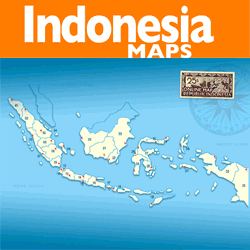The Milipede House Tour
The Arfak tribe in the Arfak Mountains, West Papua has always had an attraction. This time what will be discussed is the traditional house, the millipede house. The millipede house or in the local language called mod aki aksa or igkojei serves as a place to live, educate children and traditional party activities. Known as the millipede house because it is shaped like a square house on stilts, using a lot of supporting wood as pillars, so it looks like a thousand pillars.
The walls of the house are made of butska tree bark. The roof is made of pandan leaves, while the floor is made of nibung or bamboo. Through the cracks in the floor, fresh air was able to enter the house, with the large underside of the house often used to store firewood and also as a pigsty. The hallmark of a millipede house is that it only has two doors, front and back and no windows. The walls are quite strong because they are made of wood which are arranged horizontally and vertically and bind each other. With an average height of about 4-5 meters and about 8 × 6 meters area, this house is large and comfortable enough to to live.
The poles are very numerous, have 10 centimeters diameter per pole and are arranged with about 30 centimeters between the poles. This density is what makes this house unique and has many 'legs'. The height of the house, the many pillars of the foundation, and the relatively closed design were intended to protect the family living from wild animals and cold air and natural disasters such as storms.
In a millipede house there are usually several rooms, rooms for women and rooms for men and a room with a special place for ceremonies and traditional parties. Meanwhile, the floor in the living room was left empty, not covered with nibung sticks, so that if there was a traditional dance party, it was performed on the ground.
The millipede house is actually not just a building, but also a culture because it reflects the environment, beliefs, and way of life of the local community. Preserving the traditional house of Arfak means preserving the culture that lives in the community.
As modernization develops and many transmigrants from other provinces come to West Papua, the Milipede House is very rare to find in big cities. The people who still use this unique house are the natives of Arfak and usually live far inland, especially in the central part around the Arfak Mountains. It is difficult to avoid modernization, but the tradition of the Milipede House deserves and must be preserved.
Preservation of the Millipede house includes not only physical but also the knowledge and expertise of the Arfak tribe in build the millipede houses. The wisdom of building a millipede house can be an interesting study for the development of modern science. The millipede house tradition needs to be preserved, by making it a teaching material in schools.










